An artist's voice
Alumna Delita Martin successfully navigating a complicated time for artists of color
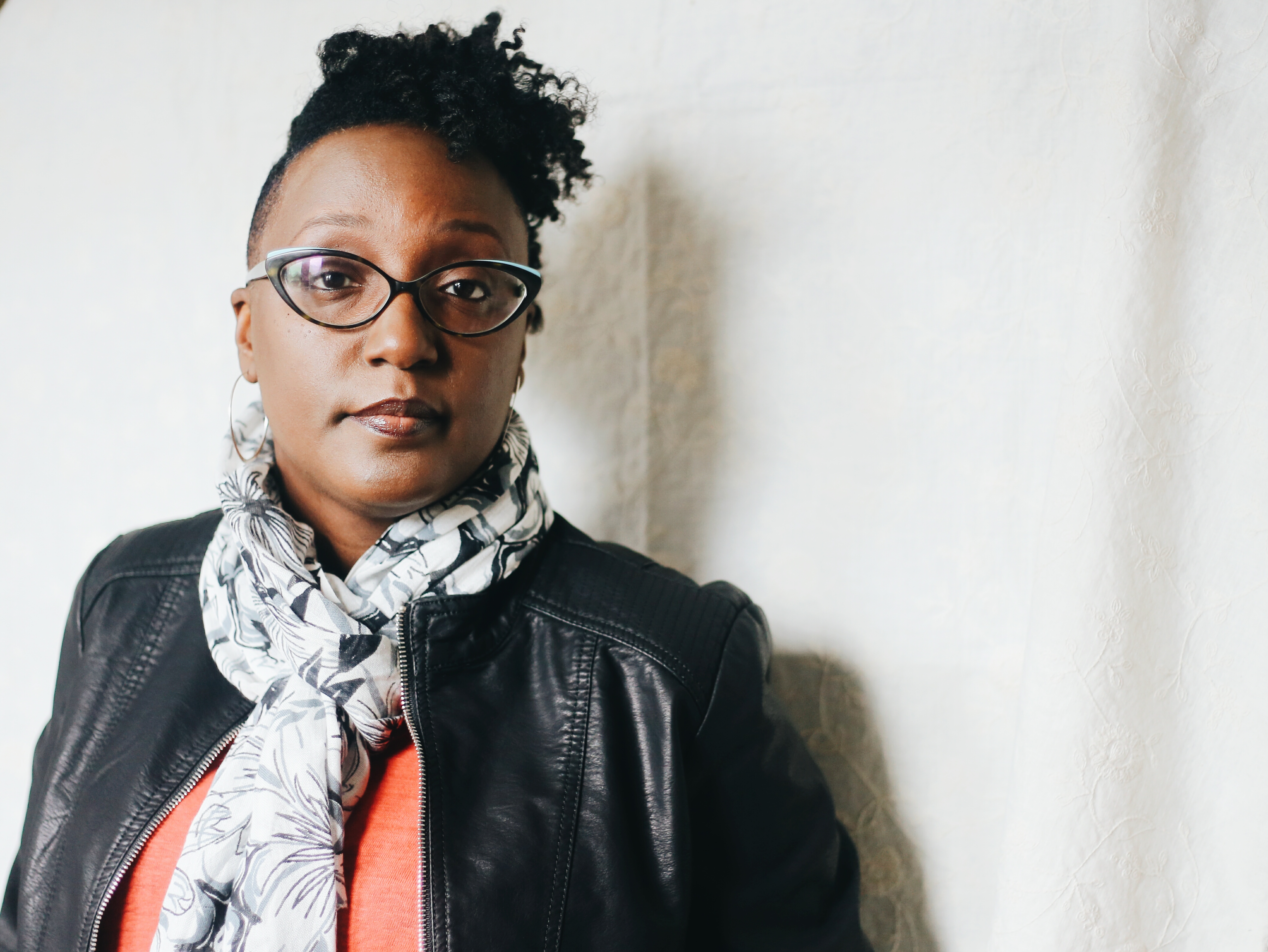
Delita Martin is happy she was alone when she went to see “The Photograph.”
Martin knew that some of her artwork might be featured in the Issa Rae-Lakeith Stanfield movie that premiered earlier this year. Writer and director Stella Meghie had specifically requested it, after all.
But it wasn’t until she saw it on the big screen that Martin knew her work had made the final cut – and that moment turned out to be overwhelming.
“I was completely speechless,” said Martin, who completed an MFA in creative arts at Purdue in 2009. “I was so glad I went by myself because I was in tears. I’ve worked really, really hard, and to see people appreciate your work, understand what you’re trying to say, and connect with the work in that way, it’s impactful for you as an artist.”
Meghie is hardly the only fan who has been moved by Martin’s work in recent years. A recipient of the College of Liberal Arts’ Emerging Voice Award in 2011, Martin’s art has been featured in exhibitions and collections across the globe, and her name has become a fixture on lists of rising artists to watch.
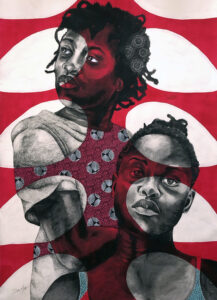
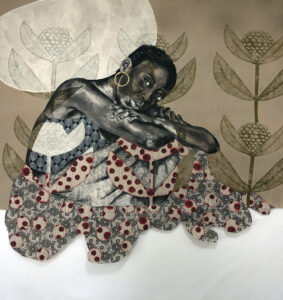
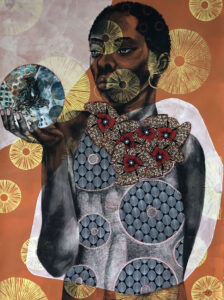
And to think she might never have attended Purdue if art professor Kathryn Reeves hadn’t been the first to return her message.
Martin completed an undergraduate degree in drawing at Texas Southern and worked as an independent artist before deciding that she wanted to add printmaking to her artistic toolbox. At first, she admittedly had her heart set on attending – gasp – Indiana University for her master’s degree. However, she contacted Purdue and IU’s art departments at roughly the same time and became excited about Purdue when Reeves responded almost immediately.
“I had said to myself, ‘Whoever responds first is where I’m going to go,’” Martin recalled. “After I spoke with Kathryn, I was like, ‘Purdue it is.’ So, we set up a meeting, and I came on campus and she walked me around and showed me everything, and I was like, ‘Yeah, Purdue it is.’”
It would be accurate to describe Martin’s three years in Purdue’s MFA program as hectic, as she lived in Indianapolis with husband Cedric and son Caleb and commuted back and forth to West Lafayette each day. When on campus, she taught undergraduate courses during the day and worked to learn an entirely new artistic discipline well into the night.
“It was an exhausting time for me,” she said. “I tell people all the time that my husband was literally a single dad for three years of that program.”
It was at one of her most exhausted points that Martin benefited from a series of generous acts by Reeves.
With Martin’s deadline to complete work for a solo exhibition approaching, Reeves took over teaching responsibilities for her burned-out student for a day, allowing Martin to focus on her work in the studio. Once class ended, Reeves visited the studio and offered another helping hand.
“It was like 10 o’clock at night, and I’m dead on my feet and I’ve got to get this stuff shipped out in the next two days,” Martin said. “She hangs up a jacket, grabs an apron, and says, ‘What are we doing?’ She stayed in the studio with me until like 3 in the morning helping me work and finish up prints. I learned so much from her that night. She’s showing me techniques, she’s showing me little things in the studio that I didn’t know, and also supporting me in something that was very important to me.”
Reeves left the Pao Hall studio to find a parking ticket on her car, but said it was a small price to pay for the work they completed that night.
“It was worth it since Delita had an amazing breakthrough in her artwork,” said Reeves, now professor emerita of art. “The ideas she generated that night in the printmaking studio have continued to inform and inspire her current work in large-scale, mixed-media works.”
Martin agreed with that recollection, adding, “It was an amazing, incredible night. I learned so much about myself. I learned what I wanted to do as an artist and what I wanted my legacy to be in terms of sharing my work with others, sharing my process with others.”
The encouragement she received from Reeves and other faculty members is what Martin cherishes most about her Purdue experience, and it’s what inspired her to recommend the university to another promising artist years later.
Martin was a printmaking and drawing instructor at the University of Arkansas at Little Rock when student LaToya Hobbs asked for graduate school advice over lunch.
“I told her that at Purdue, not just the program was amazing, but the professors were amazing,” Martin said. “Those are the types of programs that I think students should look at. Don’t just look at the program itself, but look at the professors who are there who you’ll be working very closely with.
“I learned so much from Kathryn, and I just felt like she’d be an amazing fit, so I literally sent Kathryn an email like, ‘Hey I’m introducing you to this student. I think she’d be amazing.’ And LaToya has gone on to do some incredible, incredible work.”
In fact, Hobbs – who completed an MFA in studio art at Purdue in 2013 – was named in July as the winner of the $25,000 Janet & Walter Sondheim Artscape Prize.
“We’re really good friends, and she loved her experience,” Martin said. “Her experience was very much the same as mine and she was like, ‘Oh my God, I’m so glad I went to Purdue.’ I was very happy to be able to introduce this wonderful institution to an amazing young artist and an amazing young artist to this great institution. I was pretty proud.”
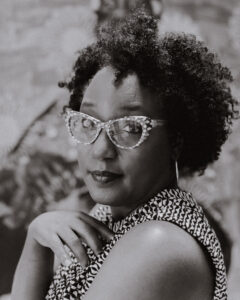
Martin plans to support other emerging artists through the incorporation of her Black Box Press Foundation, raising money to fund exhibitions that encourage social change and justice.
The cause was already close to Martin’s heart, but it has only grown in prominence this year after protests of multiple police-involved killings placed racial justice squarely in the national spotlight.
A harsh reality within the American art community is that Black artists are not well-represented in major U.S. collections. A study published in 2019 by the Public Library of Science examined the public online catalogs of 18 major American museums and found that 85% of the work was created by White artists and 87% was from male artists.
The New York Times reported this summer on the art community’s racial shortcomings – a photograph in the story featured one of Martin’s pieces – focusing specifically on Black gallery owners’ difficulties gaining acceptance into prominent art fairs.
“You go into museums and you go into galleries, and you don’t see you being represented, and so that’s difficult,” Martin said. “It’s also challenging to think about yourself as an artist and asking, ‘How do I represent myself in my work and represent my people in my work and still have it be socially acceptable and still be successful in terms of what I do?’
“Honestly, will I always fight that battle? Yes, I will, and I’ll never give up. I’ll never stop uplifting my community, Black women, the Black body in my work. I’ll never stop doing it. If I never sell another piece of artwork, it will always be a prominent part of my work, so I don’t let it stop me. But I will challenge it, and those are challenges that we just have to continue to work through as artists and as galleries.”
While the events of the summer brought increased attention to the Black art community, Martin said she has become increasingly selective about the opportunities she considers to ensure that the interest is authentic.
As an artist who is heavily involved in choosing how and where her work is displayed, Martin appreciates the interest, but refuses to participate in projects where she might be viewed as a token – as much of her work features Black female subjects.
“I hope that people who would not have ordinarily paid attention to artists of color, and women artists, and just artists who in their realm would be labeled as ‘the other,’ I hope that they can pay attention to the work, understand the work, and learn something from it – learn something about themselves through the work and through engagement,” Martin said.
“That’s important, and so I hope that’s what happens. But I feel like for me as an artist, it’s my responsibility to hold people accountable for that – at least the people who are viewing my work. It’s important for me to not allow individuals to make me be one-dimensional or to make me be fashionable for the week.”